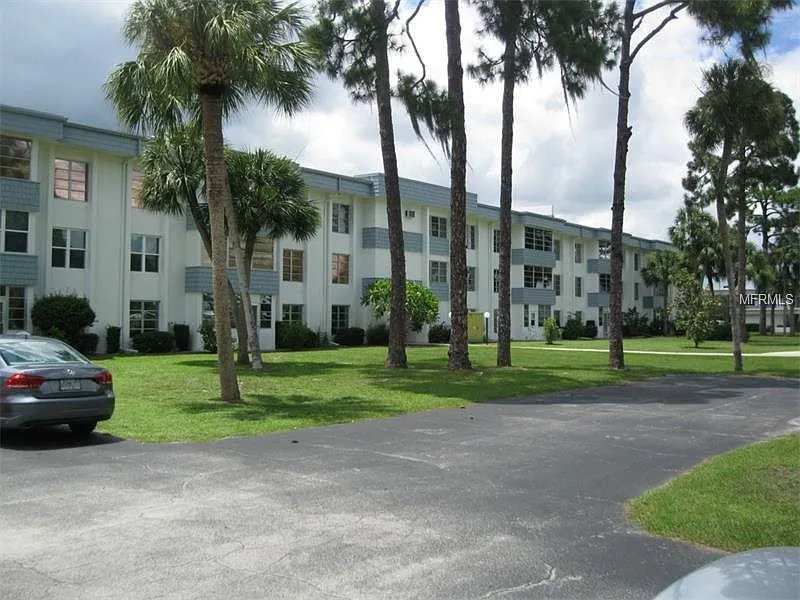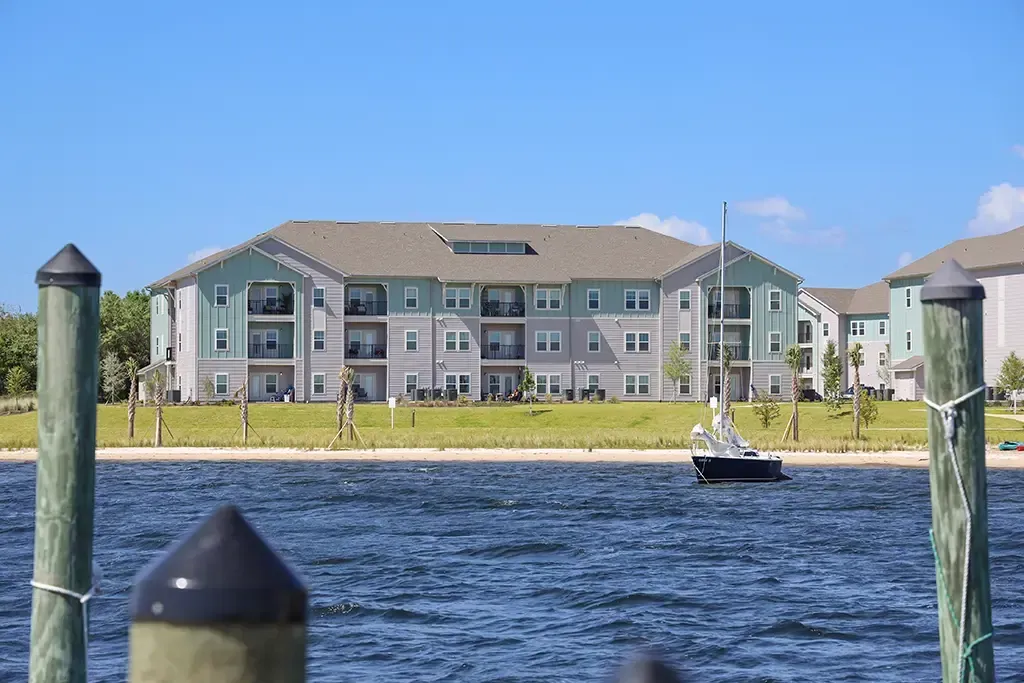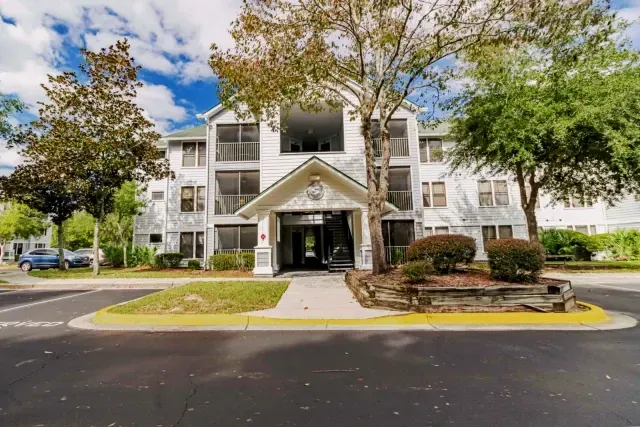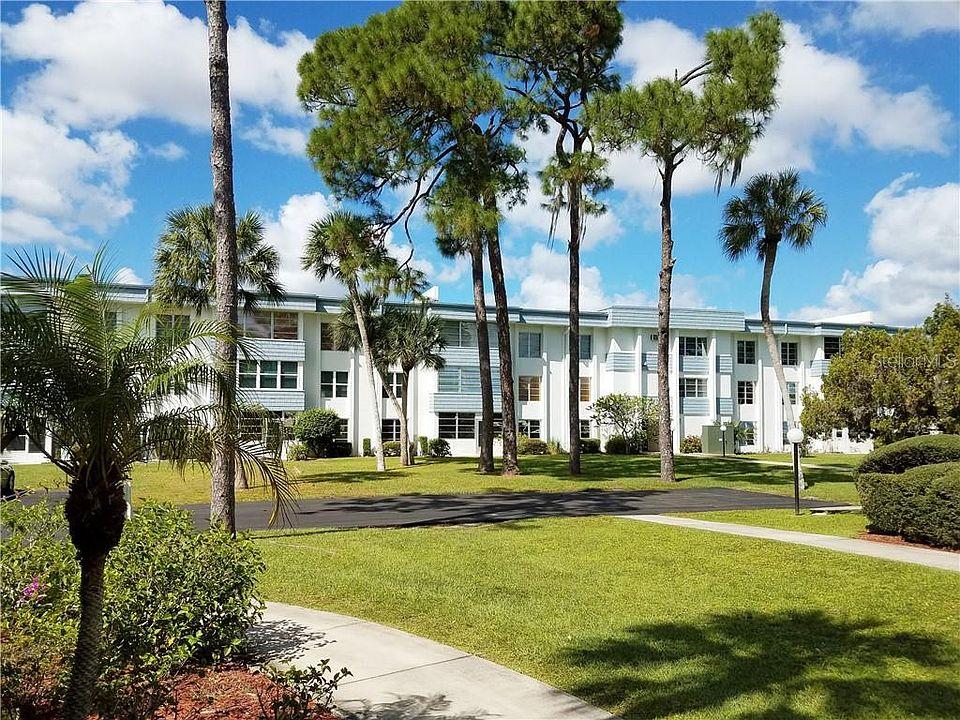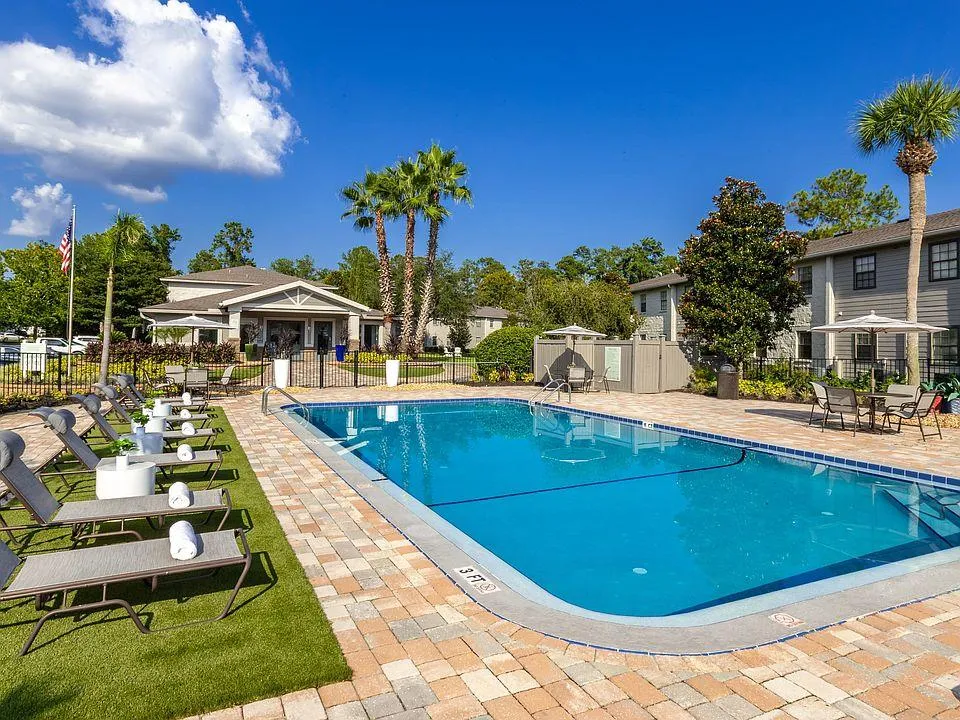
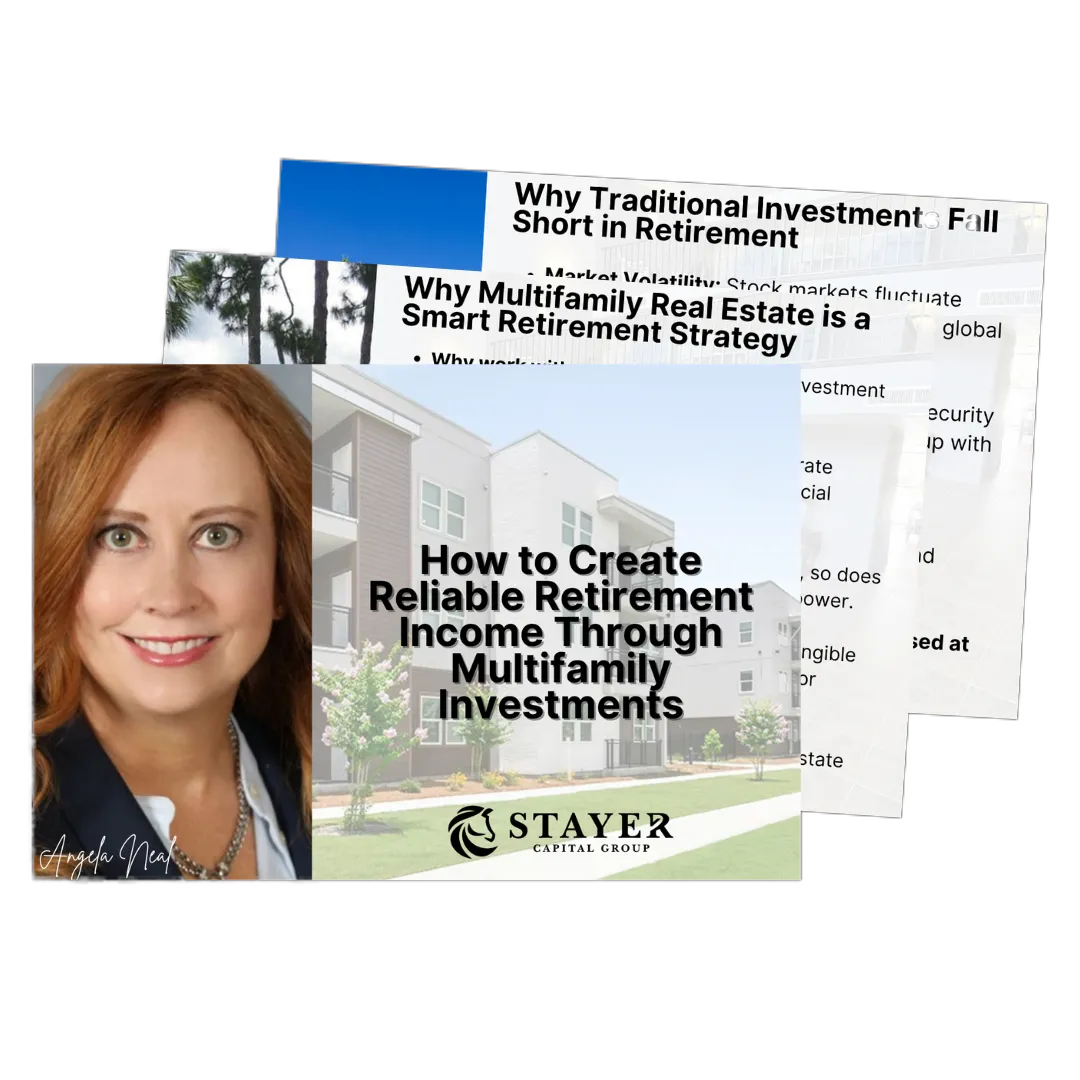
Build Wealth with More Stability — Invest Smarter Today
In a world of market swings and digital hype, smart investors know: true wealth is built on real assets. Diversify your portfolio with multifamily real estate — a proven, income-producing investment that offers consistent cash flow, long-term appreciation, and a natural hedge against inflation.
Free Guide: How to Create Reliable Retirement Income Through Multifamily Investments
WHY WORK WITH US?
We provide access to institutional‑quality multifamily investments that were once reserved for REITs and large funds.
Stayer Capital unlocks exclusive, off‑market apartment opportunities for accredited LPs.
We curate a pipeline of high‑yield multifamily assets and channel them directly to strategic investors.
Our team sources, vets, and facilitates your access to best‑in‑class multifamily opportunities that others miss.
HOW THIS WORK?
Want multifamily real estate exposure without having to front millions in capital or manage residents?
Who: At Stayer Capital, we connect accredited investors with institutional-grade apartment properties.
What: We source, underwrite, and syndicate value-add multifamily deals—typically Class B/C properties in Sunbelt markets with upside through modern renovation and rent growth.
Why Us: We offer access to off‑market, pre‑underwritten opportunities, typically available only to REITs and large funds. Our team has closed 11,000 doors in deals and executed disciplined execution across multiple cycles.
How It Works: You invest passively; the property generates net operating income, which we distribute to LPs quarterly, while we handle due diligence and day-to-day asset management.
Investor Benefit: Potential for 7–9% annual preferred return, passive cash flow, portfolio diversification, and tax advantages from depreciation and equity accrual.
If you're looking to move beyond public REITs or direct real estate and generate stable income with professional sponsors, let’s connect—email me at [email protected] or send your info through our investor portal. You may also book a call by clicking the botton below.
Why Invest in Apartments?
Accredited investors can passively invest in apartment communities by partnering with a group as a limited partner (LP), pooling their capital with others to acquire larger multifamily properties. As an LP, you share in the income and potential appreciation without the responsibilities of day-to-day management or direct property ownership.
Why Are Apartments in Demand?
Apartments remain in high demand due to a combination of lifestyle flexibility, affordability, and shifting demographics. Many people—especially millennials, Gen Z, and downsizing baby boomers—prefer renting for the convenience, lower upfront costs, and ability to relocate easily. In growing markets, rising home prices and interest rates also make renting a more accessible option for many households.
What Are the Benefits of Renting an Apartment?
Affordability: Lower monthly costs and no need for a down payment or maintenance expenses.
Flexibility: Renters can move more easily for work, family, or lifestyle changes.
Amenities & Convenience: Many apartments offer on-site amenities like fitness centers, pools, and maintenance
services.
Urban & Community Living: Proximity to jobs, schools, entertainment, and public transit.
Ready to Protect and Grow Your Wealth?
Join Our Investor List
Schedule a Free Strategy Call
Get Our Free Guide: " How to Create Reliable Retirement Multifamily Investments "
How Real Estate Investing Helps You Catch Up on Retirement Goals
If you're behind on retirement savings, you're not alone—and you're not out of options. Multifamily real estate investment can be a powerful tool to help close the gap by:

Accelerating Wealth Building: With projected returns of 15%+ IRR, multifamily investments can help grow your capital faster than traditional methods. Estimated returns are not guaranteed.
Generating Passive Income Quickly: Many syndications begin distributing income within the first year, giving you access to cash flow without waiting for retirement age.
Compounding Over Time: Reinvesting distributions or rolling gains into future deals creates momentum to build your nest egg more quickly.
Reducing Risk Through Tangible Assets: Unlike chasing high-risk speculative investments, you're building wealth with real, income-producing property.
Whether you’re 5 or 15 years from retirement, multifamily real estate investments can help you get back on track.
Why Multifamily Real Estate is a Smart Retirement Strategy

Consistent Monthly Income: Rents generate regular cash flow that can supplement Social Security and pensions, through payouts to limited partners.
Inflation Hedge: As the cost of living rises, so does rent—helping to protect your purchasing power.
Asset-Backed Security: Real estate is a tangible asset, historically more stable than stocks or crypto.
Tax Benefits: Depreciation and other real estate deductions can help reduce taxable income.
STILL NOT DECIDED?
Frequently Asked Questions
Real estate investing isn’t just about properties—it’s about building wealth you can see, touch, and pass down. It generates passive income, hedges against inflation, and diversifies your portfolio beyond stocks and bonds.
Is investing in apartments a good investment right now?
Yes, especially in strong rental markets and growth corridors. At Stayer Capital Group, we focus on acquiring apartments in areas with population growth, job expansion, and housing demand. These fundamentals support rental income, long-term appreciation, and value-add opportunities—making apartment ownership a reliable, income-producing investment.
What’s the difference between a condo vs. an apartment building?
A condo is typically a single residential unit within a larger building, often for personal use or short-term rentals. An apartment building, on the other hand, refers to a multifamily asset with multiple rental units—ideal for investors seeking cash flow and scalability. Stayer Capital Group specializes in multifamily assets, where investors can benefit from economies of scale and professional property management.
When is the best time to sell an apartment investment?
We typically hold our portfolio until the property reach it's value-add potential or market cap rates have compressed, before exiting or we may refininanced at the end of the hold. At Stayer Capital Group, we help owners analyze exit strategies to maximize profits—whether it’s after 3–5 years or when repositioning is complete.


Teamwork
Effective and Efficient.

Integrity
Honesty and transparency.

Excellence
Top-notch services.

ADDRESS / CONTACT NUMBER
7901 4th Street N Ste 300 St Petersburg Fl 33702
770-595-5902
EMAIL ADDRESS
FACEBOOK / INSTAGRAM
Copyright 2025. Stayer Capital Group, LLC. All Rights Reserved.

